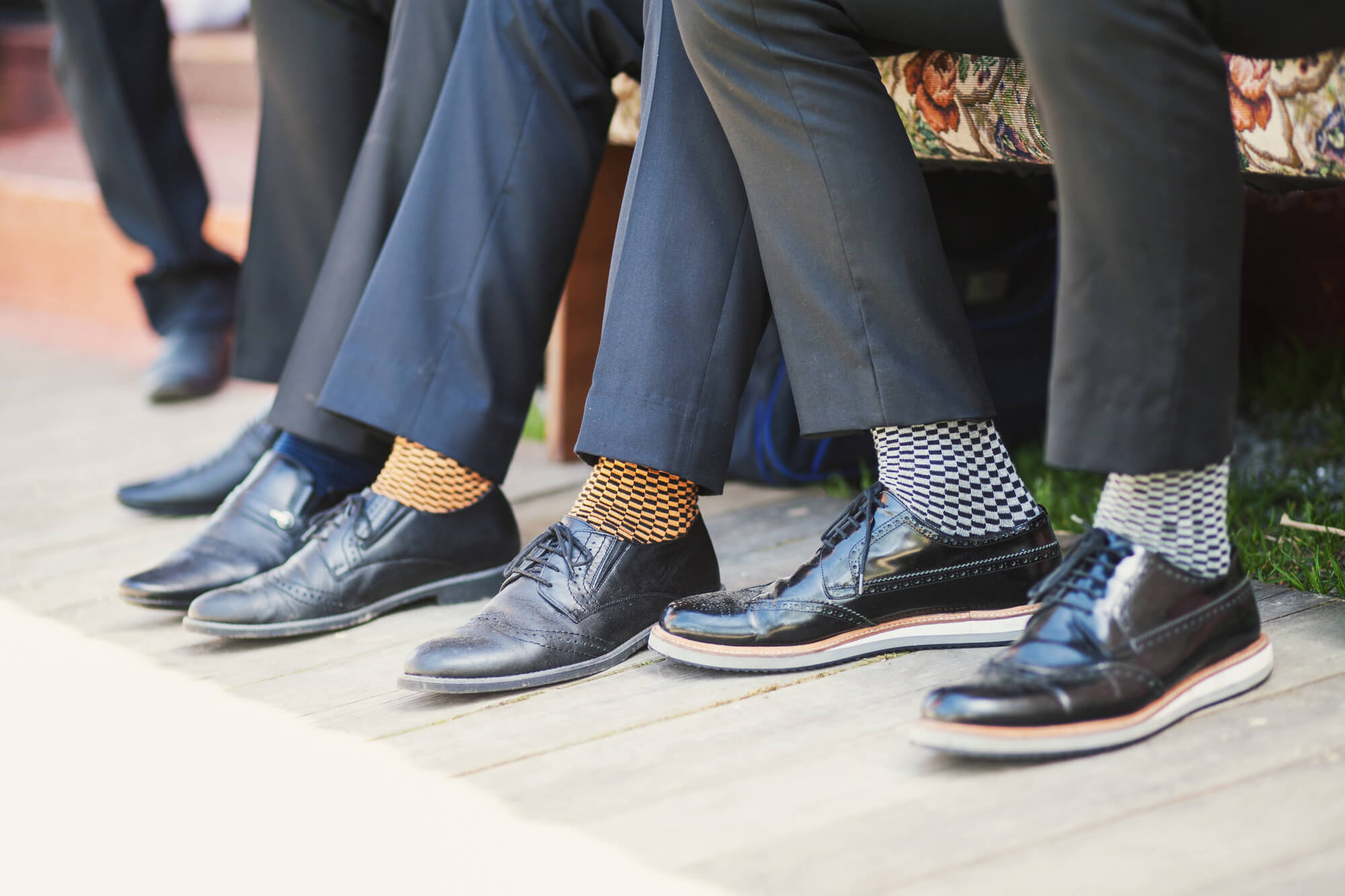Socks have long served as functional garments designed to keep our feet warm and comfortable. However, in recent years, a notable resurgence of interest in sock crafting and upcycling old socks has taken the world by storm. From knitting and crocheting socks from scratch to transforming old, worn-out socks into unique creations, these movements are gaining momentum across various communities. This article explores four distinct perspectives on this phenomenon, shedding light on the resurgence of hand-knitted or crocheted socks, the art of turning old socks into creative items, the sustainability aspect of these movements, and the social and cultural dimensions of sock crafting.

Perspective 1: The Resurgence of Hand-Knitted and Crocheted Socks
In the age of mass-produced clothing, there is a growing longing for items with a personal touch and individuality. Hand-knitted or crocheted socks have made a remarkable comeback in the DIY and crafting communities. These handmade socks offer a level of craftsmanship and attention to detail that is often absent in commercially manufactured ones. The resurgence of interest in hand-knitted or crocheted socks can be attributed to several factors:
Craftsmanship and Personalization: Handcrafted socks allow for a high degree of personalization. Crafters can choose their preferred yarn, colors, and patterns, creating socks that perfectly match their style and size.
Connection to Tradition: Knitting and crocheting have deep-rooted traditions, and the resurgence of these crafts brings a sense of nostalgia and a connection to the past. Many individuals are learning these skills from their grandparents or local crafting groups.
Unique Fashion Statements: Hand-knitted socks serve as unique fashion statements. They allow wearers to express their creativity and individuality through their choice of patterns, colors, and designs.
Sustainable Production: Some crafters appreciate the environmental benefits of producing their own socks. By crafting socks, they can ensure the use of eco-friendly materials and reduce the carbon footprint associated with mass-produced clothing.
Perspective 2: Upcycling Old Socks into Creative Items
In addition to the resurgence of crafting socks from scratch, there is a parallel movement that focuses on the art of upcycling old socks. Instead of discarding worn-out or mismatched socks, creative individuals are finding ingenious ways to transform them into new and exciting items. These can include stuffed animals, quilts, puppets, and even cleaning rags. Here’s why this perspective is gaining traction:
Waste Reduction: Upcycling old socks reduces textile waste and minimizes the environmental impact of discarded clothing. Instead of contributing to landfills, old socks are repurposed into something useful and valuable.
Creativity Unleashed: Upcycling old socks sparks creativity. Crafting enthusiasts enjoy the challenge of finding new and inventive uses for something that might otherwise be considered useless.
Cost-Effective: Upcycling can be a cost-effective way to create unique items. Instead of buying expensive materials, crafters can repurpose what they already have.
Sentimental Value: Many people have an emotional attachment to their socks. Transforming them into cherished items like stuffed animals allows them to hold onto the sentimental value while giving them a new lease on life.
Perspective 3: Sustainability and Textile Waste Reduction
The sock crafting and upcycling movements have a profound impact on sustainability and reducing textile waste. Fast fashion and mass production have led to the overconsumption of clothing and the disposal of vast amounts of textiles. Sock crafting aligns with sustainable principles in several ways:
Responsible Consumption: Crafting socks or upcycling old ones encourages more responsible consumption. People become more conscious of the materials they use and the items they discard.
Extended Product Lifespan: Upcycled items, such as quilts made from old socks, extend the lifespan of these garments. This reduces the demand for new textiles and decreases the environmental impact associated with production.
Reduced Carbon Footprint: By engaging in crafting, individuals can source eco-friendly materials and create items with a smaller carbon footprint compared to those produced in distant factories.
Education and Awareness: Crafting movements raise awareness about the environmental consequences of textile waste and the importance of sustainable practices. They educate the public about the value of handmade and upcycled goods.
Perspective 4: The Social and Cultural Aspects of Sock Crafting
Beyond the practical and environmental considerations, sock crafting has a vibrant social and cultural dimension. Crafting circles, knitting clubs, and online communities have emerged to celebrate this art form, fostering connections and shared experiences among enthusiasts. These social and cultural aspects are essential to understanding the full scope of the movement:
Crafting Communities: Crafting circles and clubs provide a sense of belonging and camaraderie. Crafters come together to share their skills, exchange ideas, and offer support to one another.
Interconnectedness: The resurgence of sock crafting is a reflection of the interconnected world we live in today. Online communities and social media platforms connect people from different parts of the globe, creating a global network of sock crafters.
Preserving Traditions: Sock crafting also plays a role in preserving cultural traditions and heritage. Traditional knitting and crocheting patterns and techniques are passed down through generations, ensuring their continued existence.
Empowerment and Well-Being: Many participants in sock crafting find the activity therapeutic and empowering. It reduces stress, enhances concentration, and fosters a sense of achievement.
In conclusion, the sock crafting and upcycling movements offer a multifaceted perspective that encompasses craftsmanship, sustainability, creativity, and community. These movements have captured the hearts and minds of individuals seeking a more meaningful connection to the clothes they wear and the materials they use. Whether it’s the resurgence of hand-knitted socks, the art of upcycling old ones, the push for sustainable practices, or the sense of community and culture that surrounds these activities, sock crafting has become a significant part of the modern DIY and crafting landscape. It demonstrates that even the humble sock can serve as a canvas for creativity and a symbol of a more sustainable, interconnected, and meaningful way of living.
Tags: Dress Socks